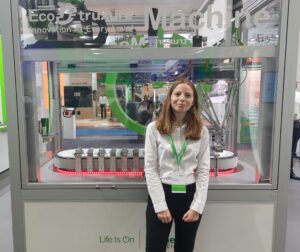There’s been a lot of discussion around sustainable energy solutions over recent years. Governments and businesses are taking initiatives to undo the damage done from years of unabated use of fossil fuels. People are now desperate to adopt sustainable sources of energy. Sustainable energy solutions involve harnessing renewable resources such as solar, wind, and hydropower to generate electricity. Unlike finite fossil fuels, these sources are abundant and are continuously replenished by natural processes. Adopting sustainable energy solutions offers a viable, long-term alternative to traditional fossil fuel-based energy generation methods.
With so many options available, how do you know what works best? Here are the most popular sustainable energy solutions for businesses and individuals:
1. Wind power
Wind power is an energy source that utilizes wind power to generate electricity. It converts kinetic energy from the wind into mechanical work, which can then be converted into electrical energy. Wind turbines are typically large spinning cylinders mounted on towers, with each blade more than 100 feet long. The turbine’s blades are connected to a rotor that spins in response to changes in wind speed and direction. As wind passes through the rotor, it pushes against it and makes it spin (this is called aerodynamic lift). The faster the blades turn, the more electricity they produce; some extremely large turbines can generate up to 2 megawatts of electric power (equal to about 1 million standard light bulbs).
Wind turbines are usually placed where they’ll receive strong, steady winds—such as along mountain ridges or near bodies of water.
2. Solar power
Solar power, also known as photovoltaic (PV) energy, is one of the most abundant renewable energy sources. It is considered a sustainable power source because it does not deplete natural resources and has little environmental impact. PVC panels convert sunlight into electricity that can be used for multiple purposes; for example, solar panels can generate electricity for homes or businesses and serve as a power source for remote communities.
3. Biomass energy
Biomass energy is a renewable energy source that can produce electricity, heat, and fuels. Biomass is organic material from living or recently living organisms. Examples include wood and waste from agriculture, industry, and forestry.
This energy source is the world’s largest renewable energy source and can be used to produce electricity, heat, and fuels. Moreover, it is the only form of clean energy that can be stored easily in large quantities with little loss of quality or conversion efficiency. Furthermore, since this form of energy is available locally, it does not depend on transport costs. Moreover, biogas reduces our dependence on non-renewable resources like coal and oil and reduces greenhouse gas emissions compared to fossil fuels.
4. Hydro energy
Hydroelectricity is a renewable energy source. The movement of water generates it, and most hydroelectric power plants are large dam systems that use the force of falling water to turn turbines. This movement powers generators, which produce electricity that can be used for homes or businesses. Hydroelectricity accounts for around 24% of global electricity generation and about 80% of all renewable energy production worldwide.
5. Geothermal energy
Geothermal energy can be defined as the heat stored in the Earth’s core. Geothermal energy is clean and renewable and can be used for heating and cooling. It’s also used to generate electricity.
Geothermal energy is the natural heat of the Earth’s interior, which remains at a fairly constant temperature of about 5,000 degrees Fahrenheit which is 2,700 degrees Celsius. This heat can be tapped for geothermal power generation for direct use of space and water heating. In addition to its uses as an energy source, geothermal heat contributes to keeping our planet’s temperature relatively constant by maintaining a balance between incoming sunlight and outgoing infrared radiation from Earth’s surface.
6. Tidal energy
Tides are the rise and fall of ocean water levels over time. Tides in oceans happen when the gravitational pull of the moon affects the Earth’s oceans. The sun and moon pull on the Earth’s water, creating high and low tides. There are two types of tides: tidal currents and tidal surges.
Tidal current is created by the moon’s gravitational pull on the Earth’s oceans. These currents move water toward the shore, which causes waves to break on the beach. A tidal surge occurs when there is a change in the tide level. This can happen when strong winds blow against the tide, causing it to rise quickly or fall suddenly.
The basic concept behind tidal energy is using natural movements in the ocean to generate electricity using turbines placed underwater near stream banks or other areas where there will be a lot of movement from incoming and outgoing tides over time.
7. Battery storage solution & microgrid
Battery storage solutions and microgrids play a crucial role in modern energy infrastructure by providing efficient storage and distribution of electricity. During grid disruptions, they ensure uninterrupted power supply, offering resilience and reliability.
Sustainable energy solutions can minimize the dependence on fossil fuels. They promote grid stability and enable communities and businesses to achieve greater energy independence, contributing to a more sustainable and resilient energy future.
The future of sustainable energy solutions
You may think that the future of energy demands a quick fix, but you would be wrong. Thankfully, there are sustainable energy solutions available today that can be used to help your business become more efficient and sustainable.
With sustainable energy solutions, you don’t have to worry about how your business will function in the future because you will already have a plan in place. Many businesses are turning towards these types of options because they realize the importance of being sustainable while still providing their customers with high-quality service or products at an affordable price point.
In addition to creating positive impacts on the environment, these types of options also provide other benefits, such as lower operational costs and increased customer loyalty.

What are the benefits of sustainable energy?
Here are some of the benefits of sustainable energy solutions:
- Reduces greenhouse gas emissions: Emissions from fossil fuel combustion can be minimized by utilizing renewable energy sources.
- Promotes energy independence: Decreases reliance on finite fossil fuels, increasing autonomy and sustainability.
- Creates jobs in renewable energy: Growth in the energy sector boosts employment opportunities, stimulating economic development.
- Improves public health: Reduced pollution levels lead to cleaner air and water, benefiting overall well-being.
- Enhances energy security: Diverse renewable sources decrease susceptibility to supply interruptions, ensuring reliable energy access.
Engage in active energy management with Schneider Electric
At Schneider Electric, our sustainability experts guide clients to efficiently manage their energy spending, increase efficiency and meet sustainability goals. So, if you’re considering a new power source for your home or business, you should contact us today! There are many benefits to using sustainable energy solutions like these over traditional means like oil or gas—and they just might save our planet in the long run too! Via long-term collaborative relationships, we assist our clients in developing an energy management strategy, delivering efficiency in their establishments, and maintaining improvements over time.



